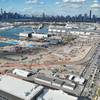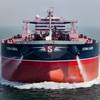ShipConstructor to Support STEP Import and Export
STEP, part of the International Organization for Standardization (ISO), is an international, non-proprietary standard for the exchange of product model data. Its intent is to help reduce the costs and improve the quality of data translation throughout a product’s lifecycle, between different organizations involved in the product’s lifecycle, and between physically dispersed sites within an organization. STEP was first introduced in 1994 and is now widely used by many of the world’s largest manufacturers. Recognizing the importance of STEP to the shipbuilding industry, the Office of Naval Research (ONR) and the National Shipbuilding Research Program (NSRP) awarded a Small Business Innovation Research (SBIR) grant to IPT in May. The goal is to develop a set of software tools that use STEP to help reduce the costs of pipe production for ships. Foremost among these tools is the development of STEP import/export capabilities for ShipConstructor, the design software-of-choice for the NSRP’s Second-Tier Shipyard Design Enhancement Program.
Subcontracting between shipyards can reduce total construction costs by leveling workloads and maximizing the use of automated equipment. However, current methods of subcontracting piping involve the use of paper drawings, resulting in substantial delays, costs, and errors. For Naval vessels, piping represents more than twenty five percent of ship construction costs, so increasing the efficiency of pipe subcontracting can result in significant savings.
Initially, IPT will develop a translator that enables ShipConstructor to import and export STEP files containing pipe, HVAC, and equipment data. IPT will also develop complementary tools that allow pipe shops to use STEP data most effectively. Subsequent development of the translator will focus on additional data types, such as ship hull molded forms and ship structures. Unlike other file formats and data transfer mechanisms, the STEP format can support an unlimited range of data, including geometry, topology, tolerances, relationships, attributes, assemblies, configuration, and more. By overcoming the limitations of proprietary CAD formats, STEP can provide a seamless exchange of product model data between design, analysis, and manufacturing systems. STEP can also help an organization unlock its wealth of legacy data, by acting as a reliable data transfer mechanism between older, proprietary CAD systems and modern, product modeling systems like ShipConstructor.
The STEP translator will be released as an integrated component of ShipConstructor in the spring of 2006.














